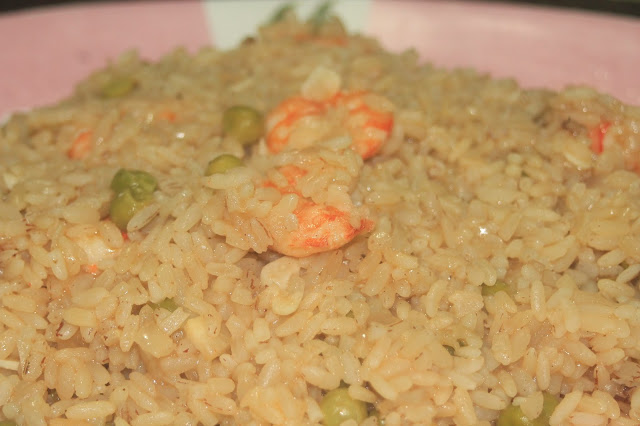
Ingredients
- 5-6 thin slices of chorizo, roughly chopped
- 1 onion, chopped
- 2 red peppers with one finely diced
- 2 tomatoes, roughly chopped
- 4 cloves of garlic, chopped
- 2 cups medium grain rice (like rose matta or calasparra)
- 6-7 strands of saffron
- 1 tsp chili flakes
- 1 tsp paprika
- 2 tsp dried thyme
- 1/2 cup peas
- 4 cups chicken/fish stock
- 1 cup dry white wine
- 8-9 prawns, cleaned and deveined
- 19-20 cooked clams
- 6 squids, cleaned and cut into thick rings
- 2 tbsp olive oil
- salt to taste
- Chopped parsley and lime to serve
Method
- Heat the stock on medium heat till it starts to boil. Switch it off and add the saffron. Mix it around so that the golden hue of the saffron diffuses through the stock. The saffron is only present in the recipe to add that light golden colour to the rice grains. It can easily replaced with 1 tsp turmeric for a punchier yellow.
- Roast the un-diced red pepper, either in an oven or over the stove. Once the skin blackens in parts on each side, take off and let it cool. Then peel the skin off and cut into longitudinal strips.
- Heat the oil in a flat-bottomed pan with a lid. Once smoking, add the chorizo and fry to a crisp.
- Add the garlic, onions and diced red pepper and fry it in the oil. Once the onions become translucent, add the tomatoes, thyme, peas, paprika and chili flakes and stir around. Cook on a high heat until the tomatoes lose their firmness and then add the rice.
- Stir the rice around to make sure that the oil coats each individual grain.
- Add the wine and cook the rice until the wine is completely absorbed.
- Then pour in half the stock, reduce the heat to medium high and cover with a lid. Once the stock's been poured in, avoid stirring the rice.
- It should take around 10-15 minutes for the stock to be absorbed by the rice. Once absorbed, add the prawns and the remaining stock.
- Cook on a medium high heat and put the lid back on. Once most of the stock is absorbed, and only a thin film of it is left, add the squid rings and clams, and salt to taste.
- Put the lid back on and let it cook until the stock is completely absorbed.
- Take off the heat and let it rest for 5 minutes, covered. Garnish with parsley and the juice of the lime and serve up.





